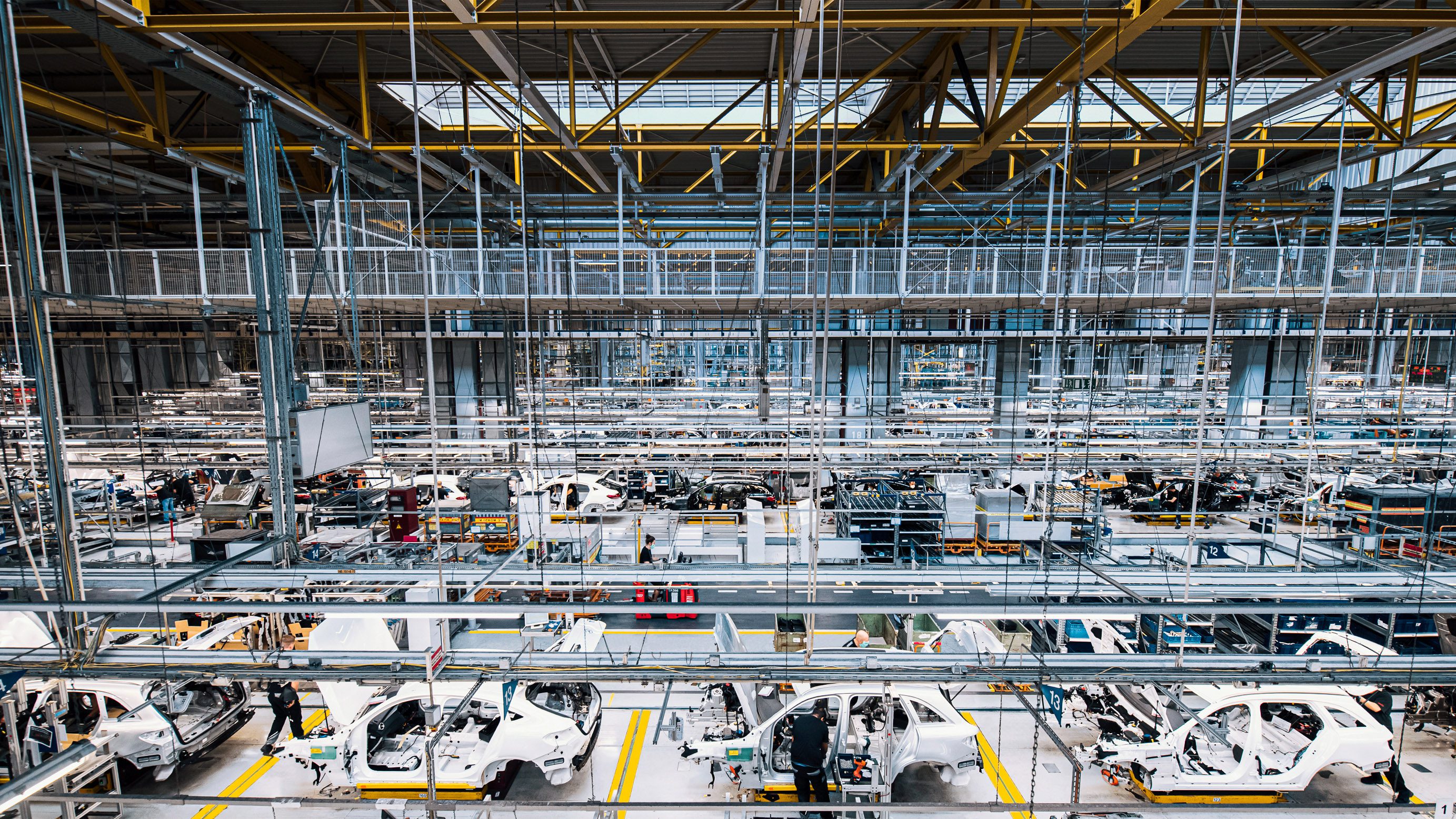A brief guide to the greenhouse gases driving climate change
This article is from The Spark, MIT Technology Review’s weekly climate newsletter. To receive it in your inbox every Wednesday, sign up here.
For the last week or so, I’ve been obsessed with a gas that I’d never given much thought to before. Sulfur hexafluoride (SF6) is used in high-voltage equipment on the grid. It’s also, somewhat inconveniently, a monster greenhouse gas.
Greenhouse gases are those that trap heat in the atmosphere. SF6 and other fluorinated gases can be thousands of times more powerful at warming the planet than carbon dioxide, and yet, because they tend to escape in relatively small amounts, we hardly ever talk about them. Taken alone, their effects might be minor compared with those of carbon dioxide, but together, these gases add significantly to the challenge of addressing climate change.
For more on the specifics of sulfur hexafluoride, check out my story from earlier this week. And in the meantime, here’s a quick cheat sheet on the most important greenhouse gases you need to know about.
Carbon dioxide: The leading actor
I couldn’t in good conscience put together a list of greenhouse gases and not at least mention the big one. Human activities released 37.4 billion tons of carbon dioxide into the atmosphere in 2023. It’s the most abundant greenhouse gas we emit, and the most significant one driving climate change.
It’s difficult to nail down exactly how long CO2 stays in the atmosphere, since the gas participates in a global carbon cycle—some will immediately be soaked up by oceans, forests, or other ecosystems, while the rest lingers in the atmosphere for centuries.
Carbon dioxide comes from nearly every corner of our economy—the largest source is power plants, followed by transportation and then industrial activities.
Methane: The flash in the pan
Methane is also a powerful contributor to climate change, making up about 30% of the warming we’ve experienced to date, even though carbon dioxide is roughly 200 times more abundant in the atmosphere.
What’s most different about methane is that the gas is very short-lived, having a lifetime of somewhere around a decade in the atmosphere before it breaks down. But in that time, methane can cause about 86 times more warming than an equivalent amount of carbon dioxide. (Quick side note: Comparisons of greenhouse gases are usually made over a specific period of time, since gases all have different lifetimes and there’s no one number that can represent the complexity of atmospheric chemistry and physics.)
Methane’s largest sources are the fossil-fuel industry, agriculture, and waste. Cutting down leaks from the process of extracting oil and gas is one of the most straightforward and currently available ways to slim down methane emissions. There’s a growing movement to track methane more accurately—with satellites, among other techniques—and hold accountable the oil and gas companies that are releasing the most.
Nitrous oxide: No laughing matter
You may have come across nitrous oxide at the dentist, where it might be called “laughing gas.” But its effects on climate change are serious, as the gas makes up about 6% of warming to date.
Nitrous oxide emissions come almost entirely from agriculture. Applying certain nitrogen-based fertilizers can release the gas as bacteria break those chemicals down. Emissions can also come from burning certain agricultural wastes.
Nitrous oxide emissions grew roughly 40% from 1980 to 2020. The gas lasts in the atmosphere for roughly a century, and over that time it can trap over 200 times more heat than carbon dioxide does in the same period.
Cutting down on these emissions will largely require careful adjustment of soil management practices in agriculture. Decreasing use of synthetic fertilizers, applying the fertilizer we do use more efficiently, and choosing products that eliminate as many emissions as possible will be the main levers we can pull.
Fluorinated gases: The quiet giants
Last but certainly not least, fluorinated gases are some of the most powerful greenhouse gases that we emit. A variety of them fall under this umbrella, including hydrofluorocarbons (HFCs), perfluorocarbons (PFCs), and SF6. They last for centuries (or even millennia) in the atmosphere and have some eye-popping effects, with each having at least 10,000 times more global warming potential than carbon dioxide.
HFCs are refrigerants, used in air conditioners, refrigerators, and similar appliances. One major area of research in heat pumps seeks alternative refrigerants that don’t have the same potential to warm the planet. The chemicals are also used in aerosol cans (think hair spray), as well as in fire retardants and solvents.
SF6 is used in high-voltage power equipment, and it’s the single worst greenhouse gas that’s been covered by the International Panel on Climate change, clocking in at 23,500 times more powerful than carbon dioxide over the course of a century. Scientists are trying to find alternatives, but it’s turning out to be a difficult switch—as you’ll see if you read my latest story.
The good news is that we know change is possible when it comes to fluorinated gases. We’ve already moved away from one category, chlorofluorocarbons (CFCs). These were generally used in the same industries that use HFCs today, but they had the nasty habit of tearing a hole in the ozone layer. The 1987 Montreal Protocol successfully spurred a phaseout of CFCs, and we would be on track for significantly more warming without the change.
Now read the rest of The Spark
Related reading
Some scientists want to speed up or encourage chemical reactions that remove methane from the atmosphere, including researchers and companies who aim to spray iron particles above the ocean.
Methane can come from food waste, and some companies want to capture that gas and use it for energy instead of allowing it to escape into the atmosphere.
Carbon dioxide emissions from aviation are only one source of the industry’s climate impact. Planes also emit clouds of water vapor and particulate matter called contrails, and they’re a huge cause of the warming from air travel. Rerouting planes could help.
Another thing
We’re inching closer to climate tipping points, thresholds where ecosystems and planetary processes can create feedback loops or rapid shifts. A UK research agency just launched a $106 million effort to develop early warning systems that could alert us if we get dangerously close to these tipping points.
The agency will focus on two main areas: the melting of the Greenland Ice Sheet and the weakening of the North Atlantic Subpolar Gyre. Read more about the program’s goals in my colleague James Temple’s latest story.
Keeping up with climate
Volkswagen has thrown over $20 billion at EV, battery, and software startups over the past six years. Experts aren’t sure this shotgun approach is helping the automaker compete on electric cars. (The Information)
We’re finally starting to understand how clouds affect climate change. Clouds reflect light back into space, but they also trap heat in the atmosphere. Researchers are starting to puzzle out how this will add up in our future climate. (New Scientist)
Vehicles in the US just keep getting bigger, and the trend is deadly. Larger vehicles are safer for their occupants but more dangerous for everyone around them. (The Economist)
→ Big cars can also be a problem for climate change, since they require bigger batteries and more power to get around. (MIT Technology Review)
The plant-based-meat industry has had trouble converting consumers in the US, and sales are on the decline. Now advocates are appealing to Congress for help. (Vox)
Last Energy wants to build small nuclear reactors, and the startup just secured $40 million in funding. The company is claiming that it can meet aggressive timelines and says it’ll bring its first reactor online as early as 2026 in Europe. (Canary Media)
There could be 43 million tons of wind turbine blades in landfills by 2050. Researchers say they’ve found alternative materials for the blades that could make them recyclable. (New York Times)
→ Other research aims to recycle the fiberglass in current blades using chemical methods. (MIT Technology Review)
The last coal-fired power plant in the UK is set to shut down at the end of the month. The facility just accepted its final fuel delivery. (BBC)





